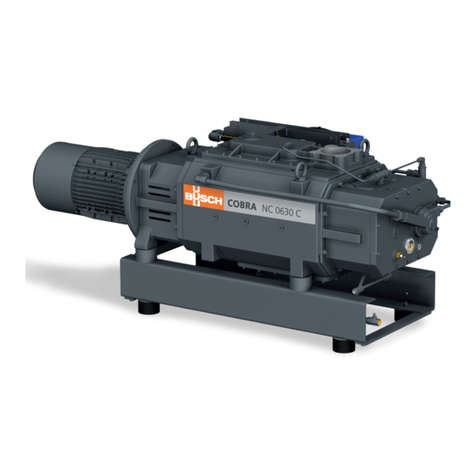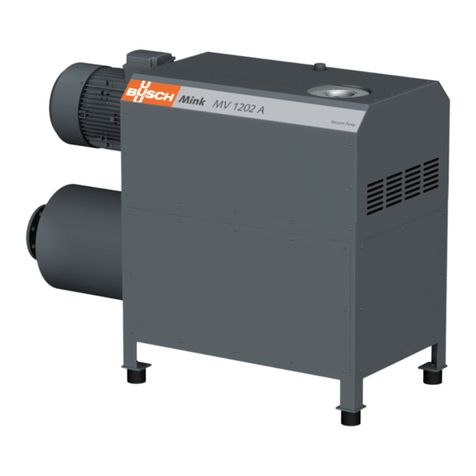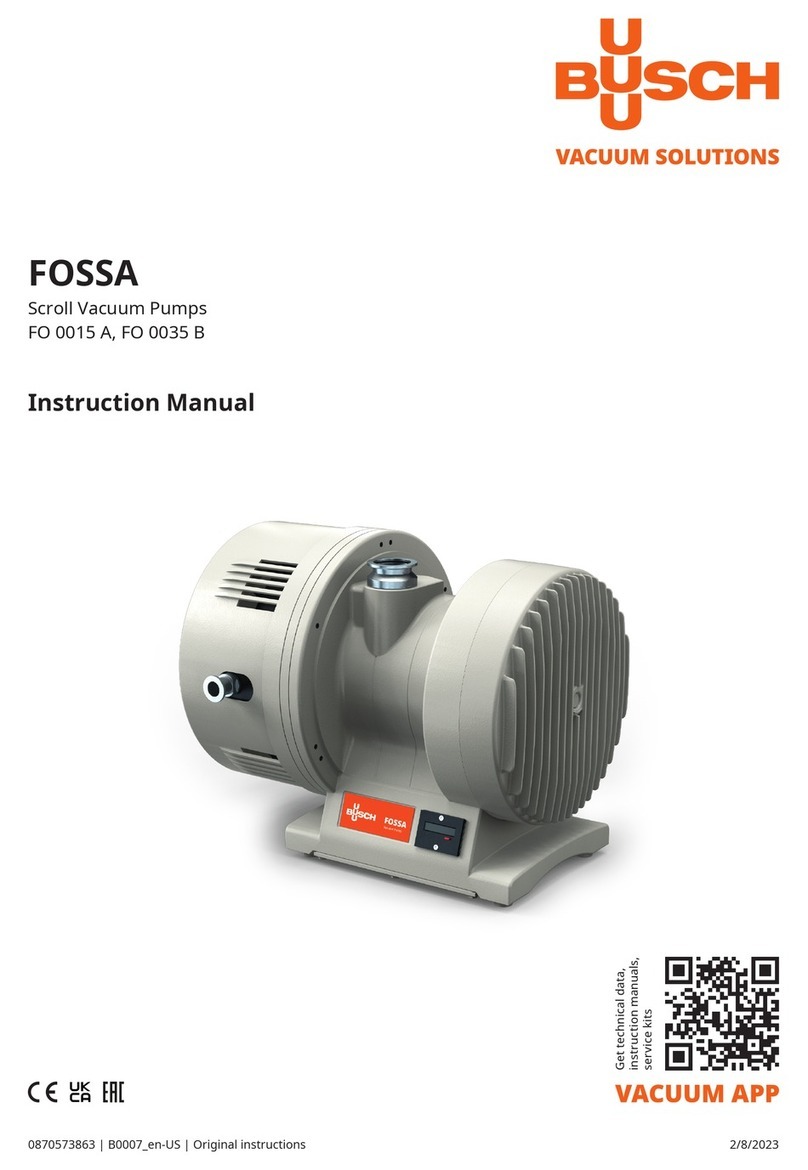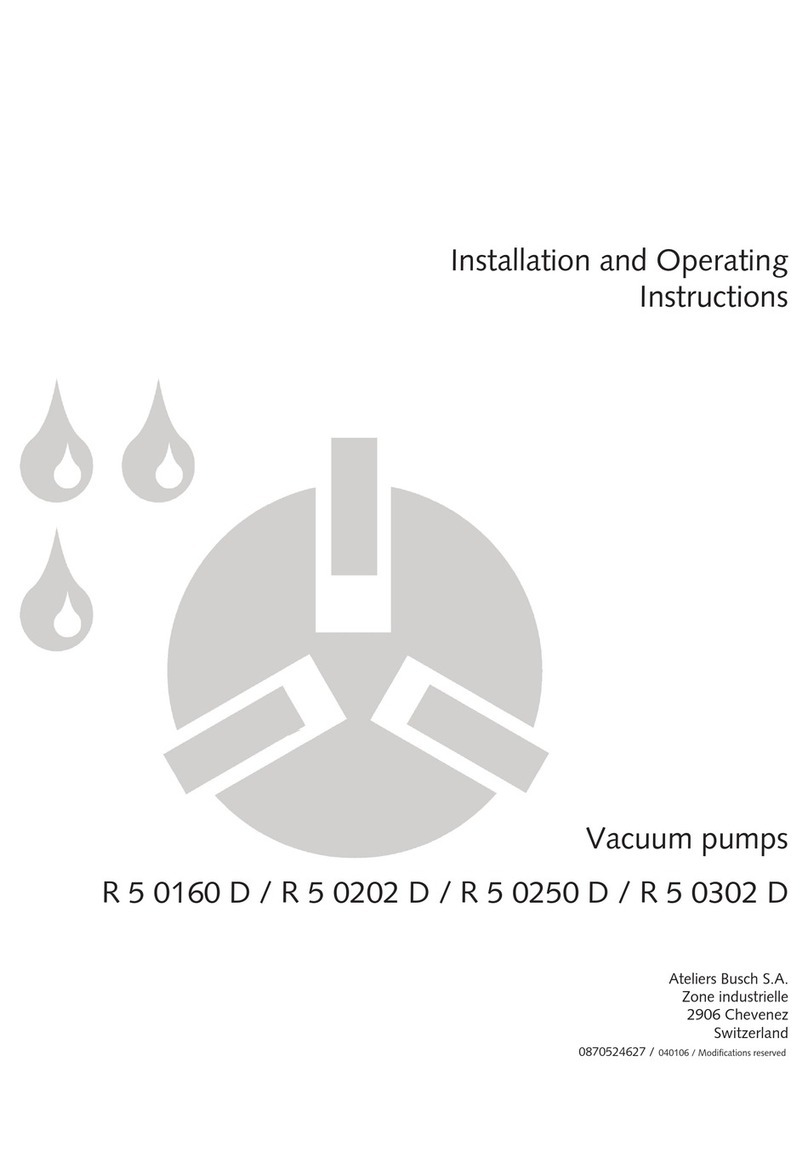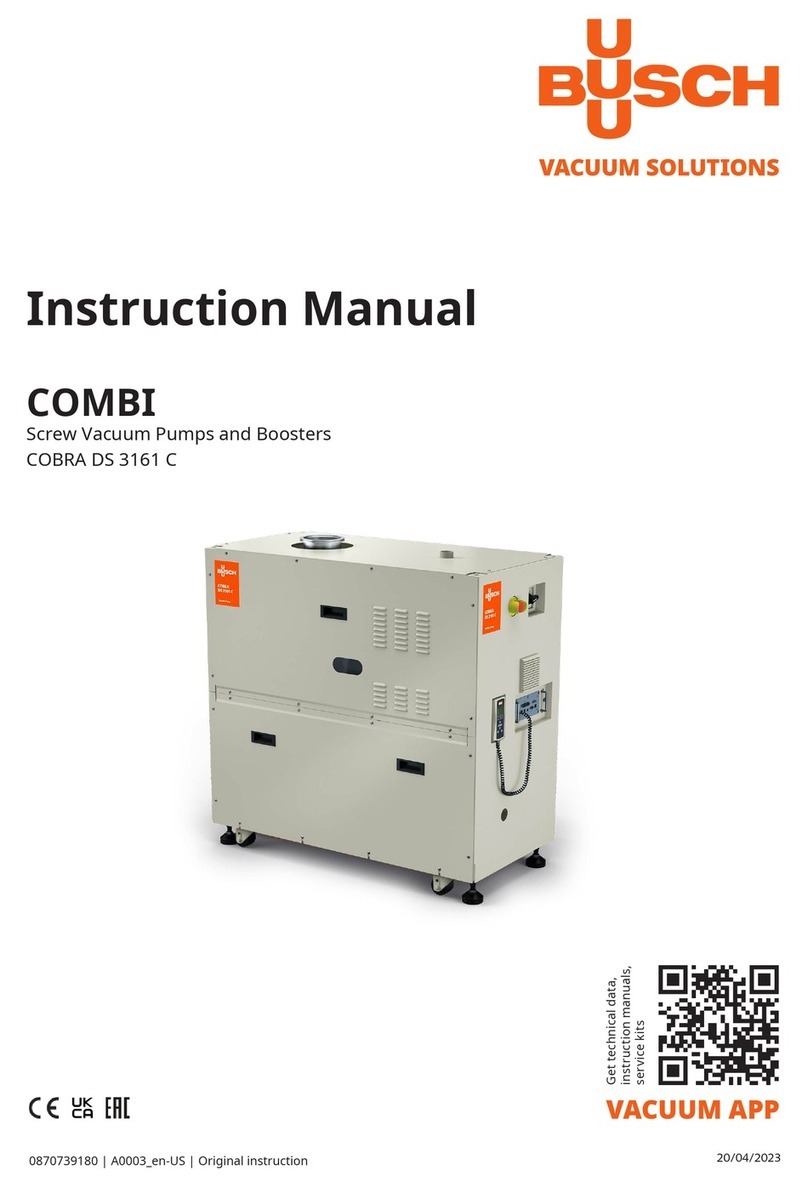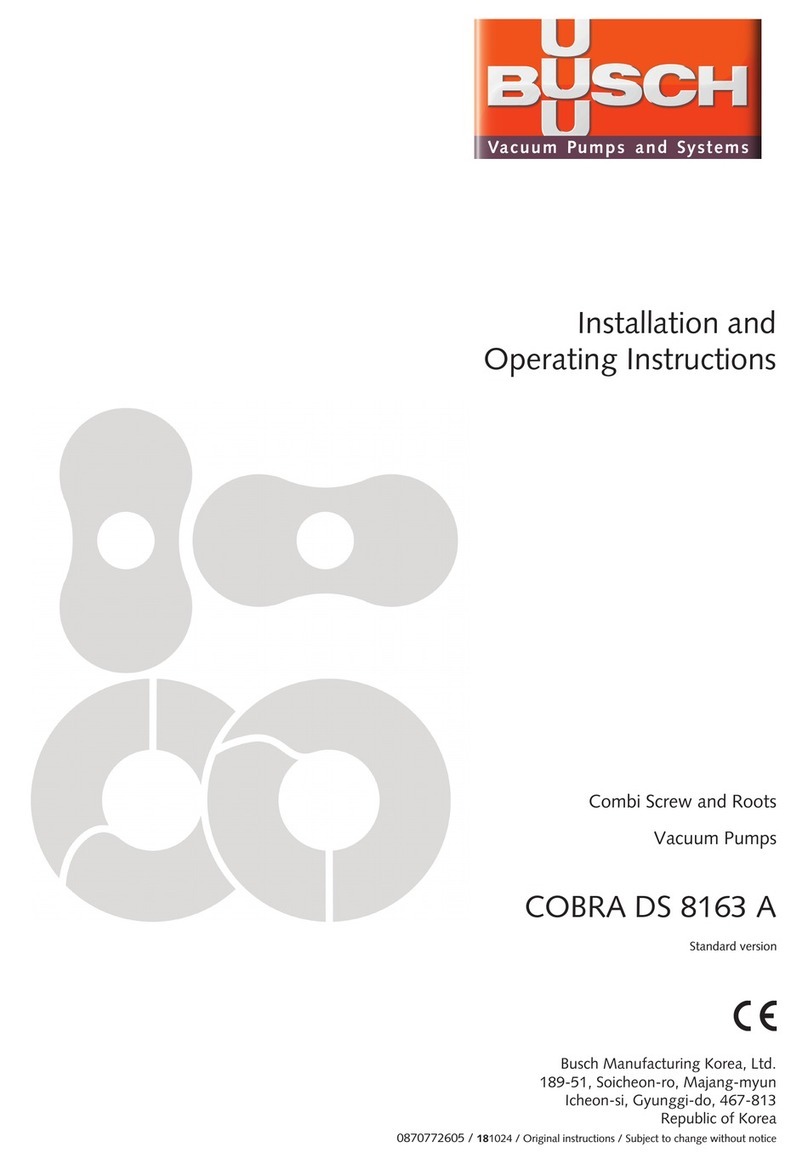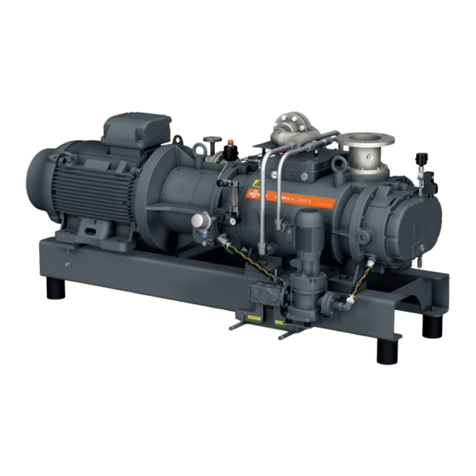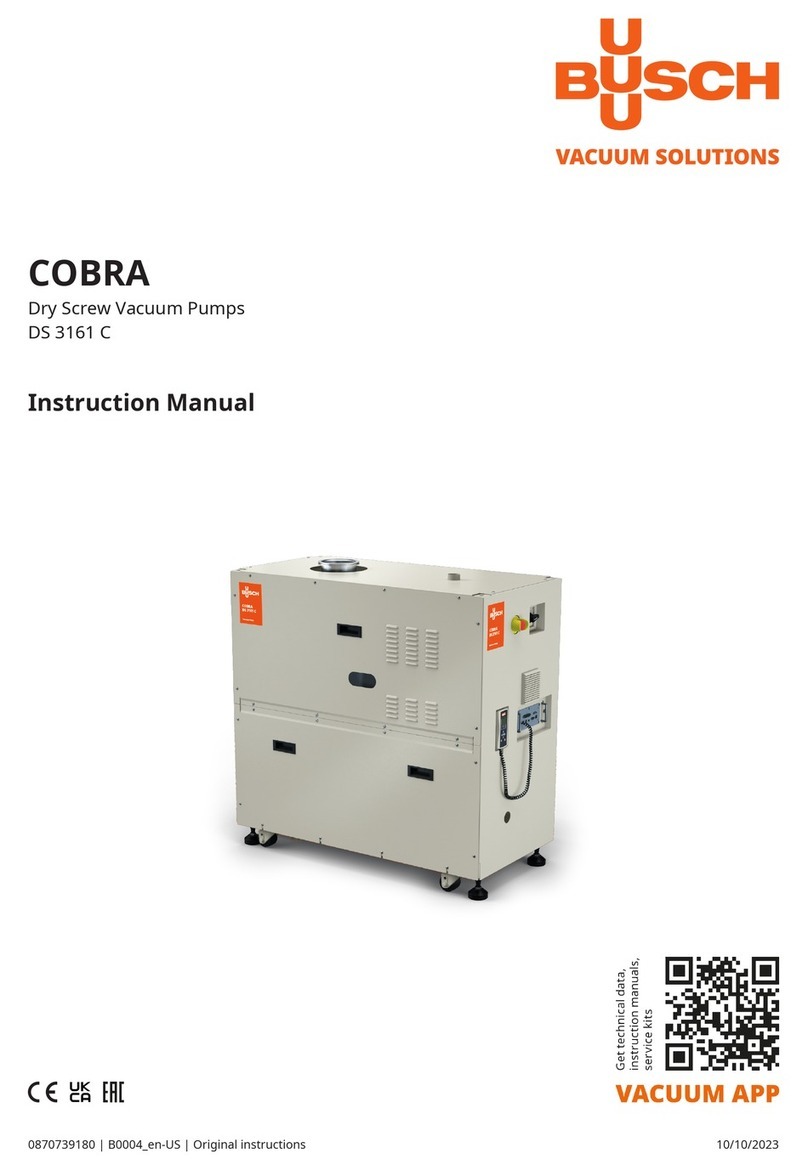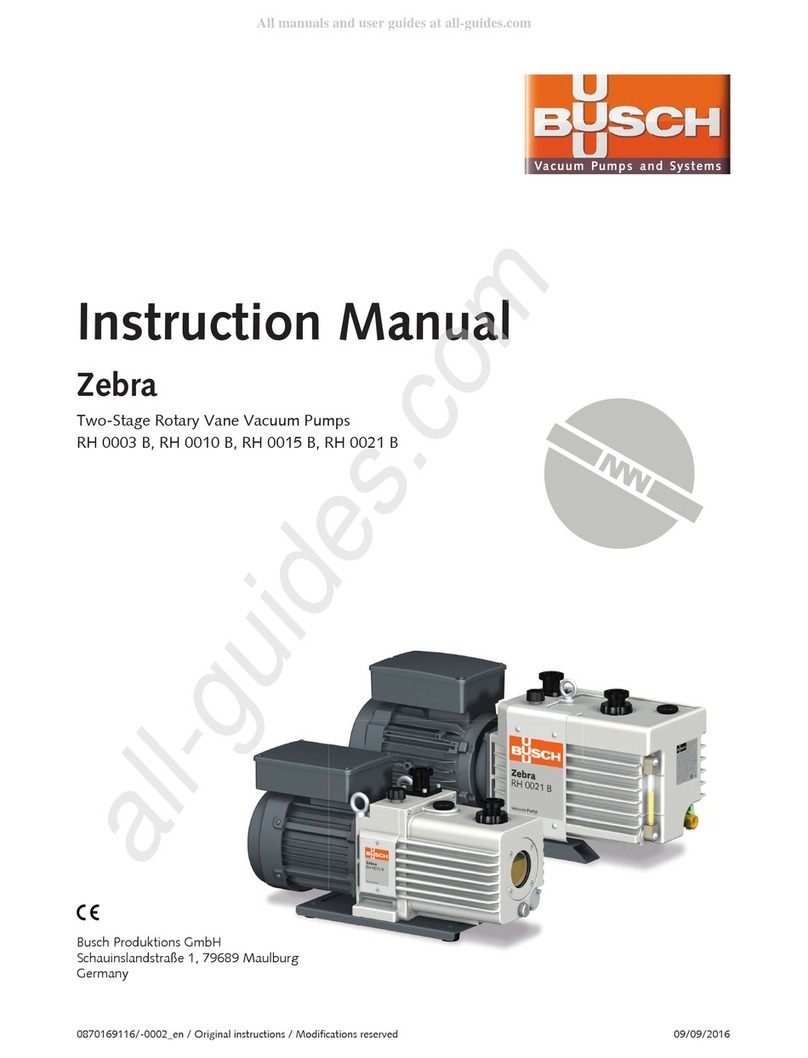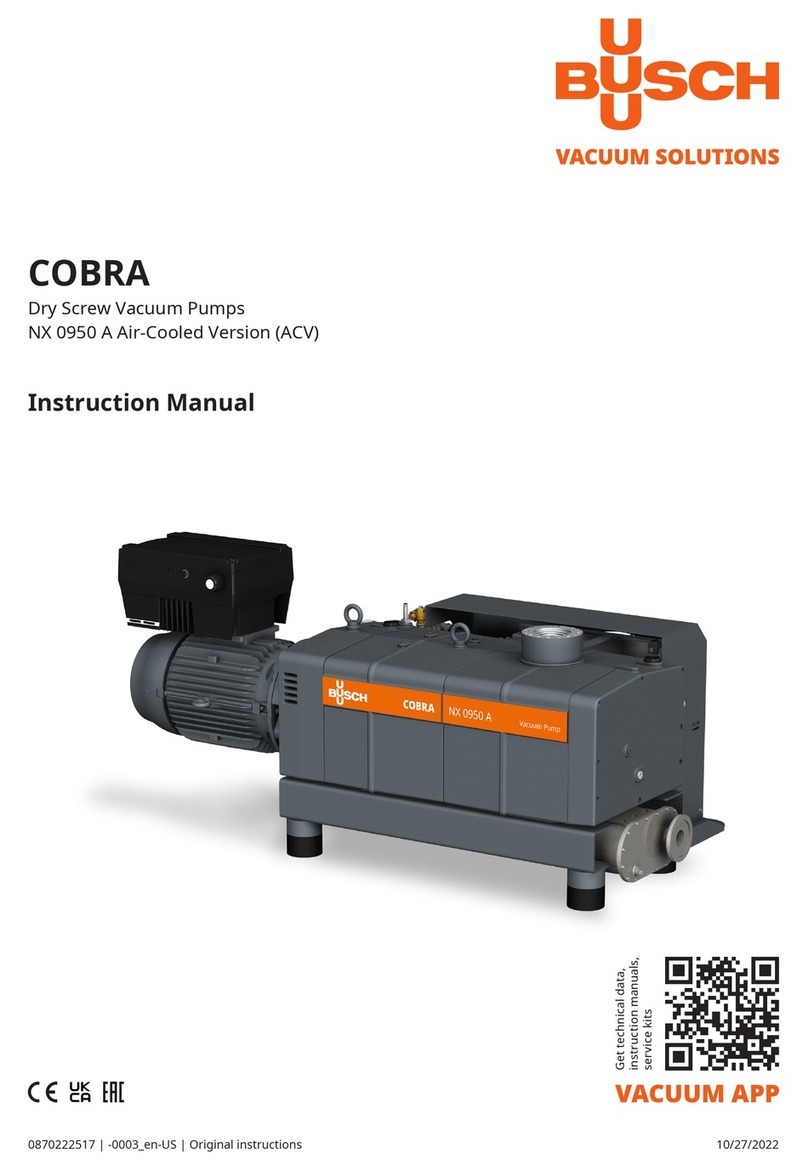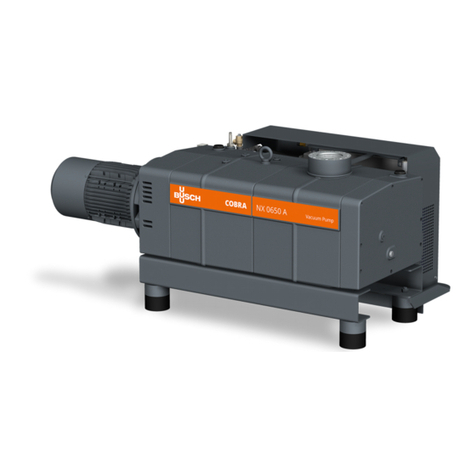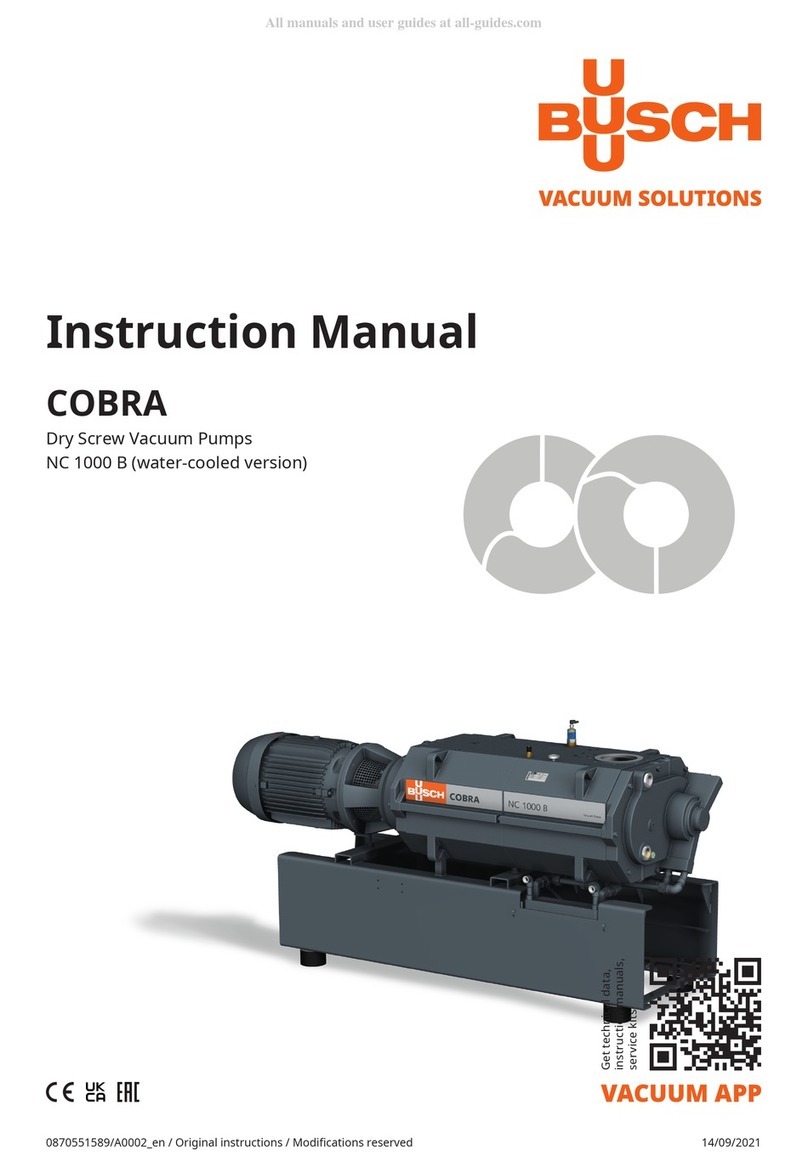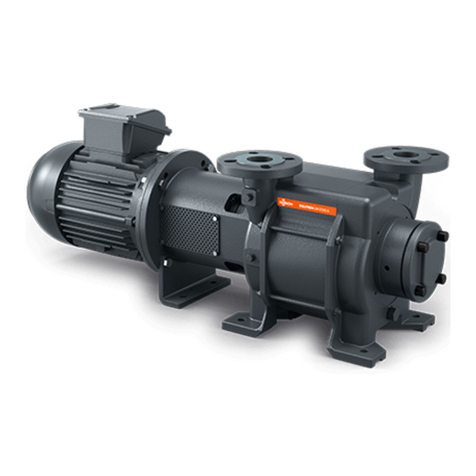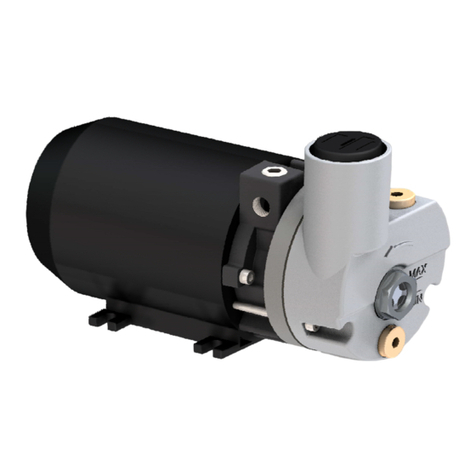
MM 1324, 1202, 1252, 1322 AV ATEX-Version
page 4
0870145304 / 190709
thermometer and temperature-transmitter in standard scope of
delivery);
II 3G IIB3 TX = in the process gas explosive atmosphere consisting
of a mixture with air of flammable substances in the form of gas not
likely to occur in normal operation but, if it does occur, will persist for
a short period only;
if the process gas contains dust, also if the dust is not combustible,
the use of a special ATEX-inlet air filter (with equipotential bonding)
is required; temperature monitoring is required (resistance
thermometer and temperature-transmitter in standard scope of
delivery);
II 3D TX °C = in the process gas explosive atmosphere in the
form of a cloud of combustible dust in air not likely to occur in normal
operation but, if it does occur, will persist for a short period only;
the use of the special ATEX-inlet air filter (with equipotential
bonding) is required;
outside = in this line classification for explosive atmosphere in
the environment of the vacuum pump
II 2G IIB3 TX = in the environment explosive atmosphere
consisting of a mixture with air of flammable substances in the form
of gas, vapour or mist likely to occur in normal operation
occasionally; temperature monitoring is required (resistance
thermometer and temperature-transmitter in standard scope of
delivery); sufficiently qualified ATEX-drive motor is required;
II 3G IIB3 TX °C = in the environment explosive atmosphere
consisting of a mixture with air of flammable substances in the form
of gas, vapour or mist not likely to occur in normal operation but, if it
does occur, will persist for a short period only; temperature
monitoring is required (resistance thermometer and temperature-
transmitter in standard scope of delivery); sufficiently qualified
ATEX-drive motor is required
II 2D TX °C = in the environment explosive atmosphere in the
form of a cloud of combustible dust in air likely to occur in normal
operation occasionally; temperature monitoring is required
(resistance thermometer and temperature-transmitter in standard
scope of delivery); sufficiently qualified ATEX-drive motor is
required;
II 3D TX °C = in the environment explosive atmosphere in the form
of a cloud of combustible dust in air not likely to occur in normal
operation but, if it does occur, will persist for a short period only;
temperature monitoring is required (resistance thermometer and
temperature-transmitter in standard scope of delivery); sufficiently
qualified ATEX-drive motor is required
Standard-version:
The gas shall be free from vapours that would condensate under
the temperature and pressure conditions inside the vacuum
pump.
Version “Aqua”:
The vacuum pump features the corrosion protection coating
CPC and is capable of conveying water vapour (➔ page 12:
Conveying Condensable Vapours). Conveyance of other
vapours shall be agreed upon with Busch. Conveyance of water
or other liquids in liquid phase increases the power consumption
and shall therefore be avoided (risk of drive overload).
The vacuum pump is thermally suitable for continuous operation
(100 percent duty).
Max. permissible number of startings per hour: 12
The vacuum pump is not ultimate pressure proof. Operation with a
closed (“blanked”) suction line will damage the vacuum pump.
The minimum allowed intake pressure is to be read from the
nameplate of the vacuum pump. By means of process control it must
be made sure that the minimum allowed intake pressure will not be
underrun. Under very restricted conditions (➔ page 4: Operation
with Vacuum Relief Valve / Ambient Air Valve) the use of a vacuum
relief valve (optional) with inlet air filter and equipotential bonding (if
required) is permitted.
The vacuum pump is not gas tight. In new conditions a volume flow
of < 0.25 m³/h passes from the environment into the vacuum pump
passing the shaft sealing. This must be taken into account
particularly in case of inerted explosive conveyed media. In case of
doubt seek advice from your Busch representative.
The vacuum pump is not gas tight. Make sure that the installation
space or location is vented such that in case of conveying media
which are dangerous to health no impermissible accumulation of
conveyed media in the environment of the vacuum pump will occur.
The installation space or location must be vented sufficiently.
The approval for use in potentially explosive atmospheres is
valid for the vacuum pump together with the described
measurement and safety equipment. The approval is void if the
system is altered or if the scheduled maintenance is not
complied with. Maintenance must be performed by specifically
instructed personnel only.
Safety Concept
Version with temperature monitoring:
The safety concept is based on the prevention of excessive
temperatures by means of a gas temperature sensor in the
vicinity of the stage gas outlet (=zone of highest temperature)
together with various other measures to prevent sparks. The
temperature sensor must be integrated into the system control
such that operation of the vacuum pump will safely be inhibited if
the shutdown temperature (see nameplate) is exceeded.
Operational Options / Use of
Optionally Available Equipment
Operation with varying speed, i.e. with a frequency inverter is
permitted, provided that the drive motor is approved for frequency
inverter operation and the allowed speed range is given on the
nameplate of the vacuum pump.
The system control must be designed such that no speed outside
the permissible range can be set.
Operation with Vacuum Relief Valve /
Ambient Air Valve
Vacuum pumps type MM 1324 AV the pressure of which according
to the nameplate is 60 hPa (mbar) are ultimate pressure proof, i.e.
may be operated against a closed suction connection. For all other
vacuum pumps operation without gas transfer would lead to
excessive temperatures and is hence not permitted.
In case the pressure control in the suction side of the system cannot
be achieved by means of process control or by controlling the drive
motor, the pressure needs to be controlled by means of a vacuum
relief valve (optional).
For the version “Aqua” it can be necessary to dry the vacuum pump
after process end by means of conveying ambient air (➔ page 12:
Conveying Condensable Vapours).
However, if vacuum relief valves/ ambient air valves are used the
following must be observed:

